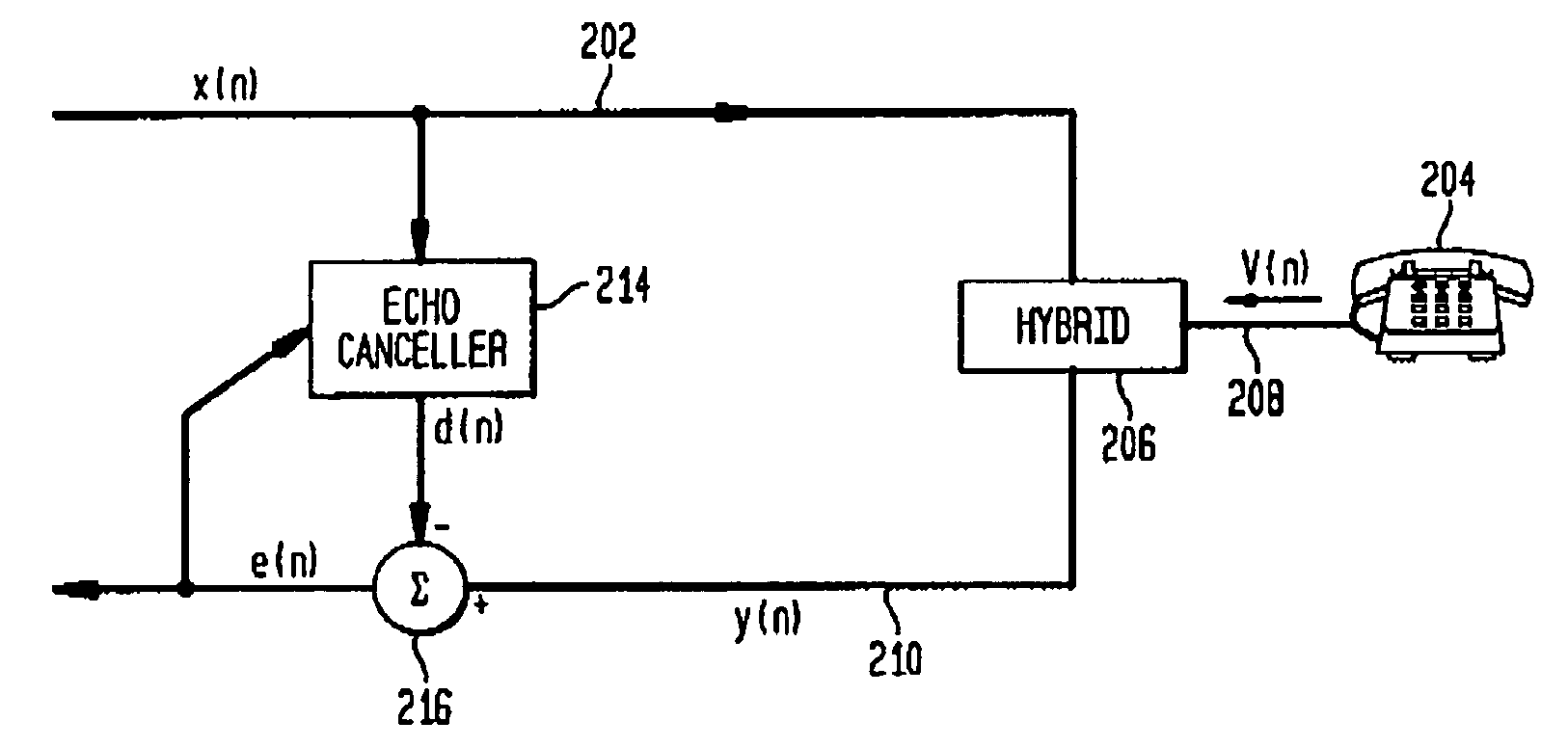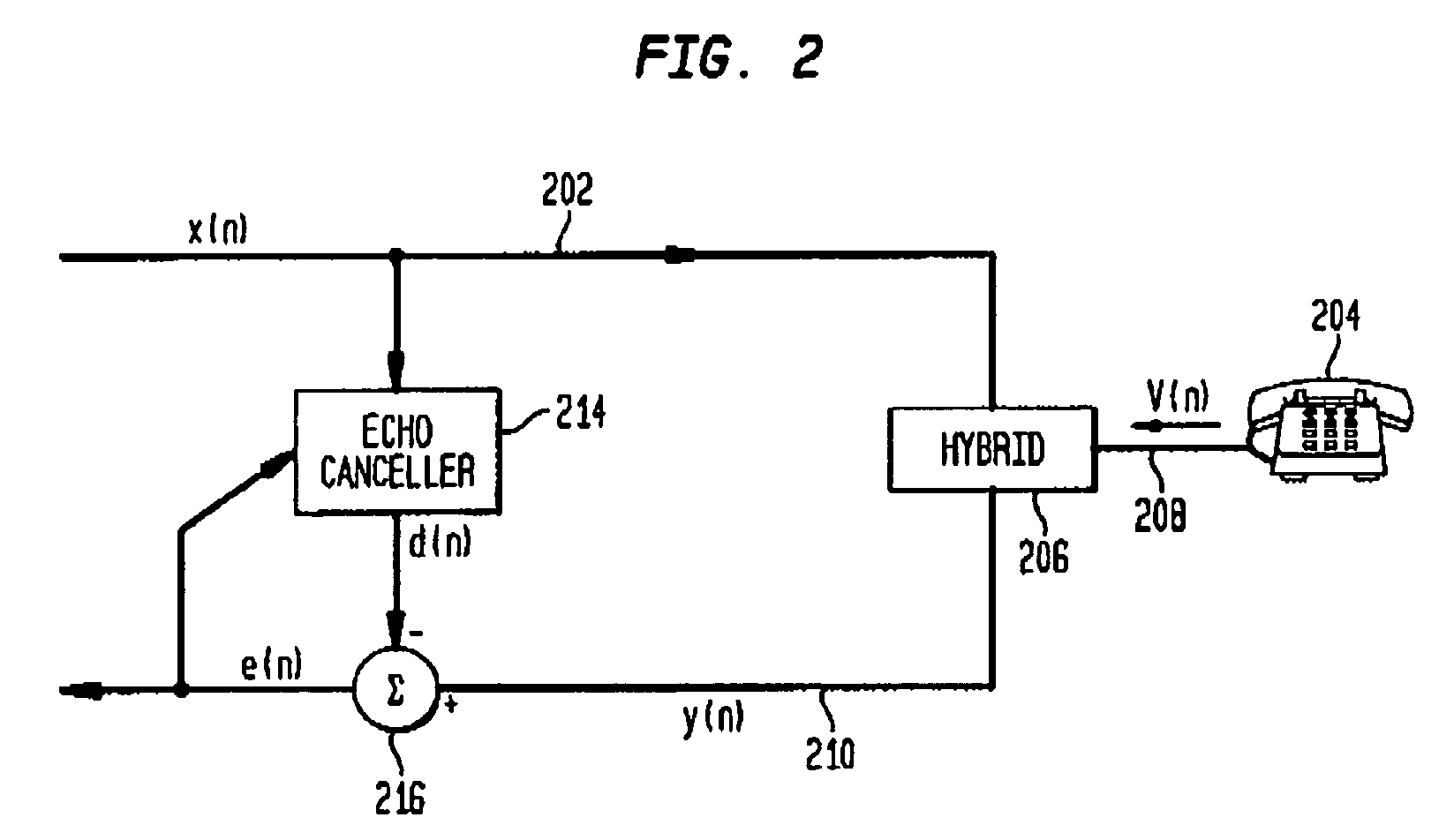Method and system for estimating and applying a step size value for LMS echo cancellers
a technology of lms echo canceller and step size value, applied in the field of estimating and applying a step size value for lms echo canceller, can solve the problems of reducing the quality of transmission, difficult to obtain in resource-constrained digital signal processing applications, and high computation intensity of their implementation, so as to improve the accuracy of coefficient update and significant processing efficiency
- Summary
- Abstract
- Description
- Claims
- Application Information
AI Technical Summary
Benefits of technology
Problems solved by technology
Method used
Image
Examples
Embodiment Construction
[0018]FIG. 2 shows a high level block diagram of a network architecture which includes an echo canceller 214. As shown in FIG. 2, X(n) is the signal received on line 202 from the far end telephone (not shown), also called the excitation signal. As discussed above, in a typical network architecture, line 202 may be a four-line trunk which carries voice signals from the far end telephone to the near end telephone 204. The hybrid 206 directs the signal energy arriving from the far end telephone via trunk line 202 to the two wire subscriber loop 208 without allowing it to return to the far end telephone via trunk line 210. However, as discussed above, some portion of the excitation signal X(n) gets reflected back on line 210 as an echo due to an impedance mismatch, and this echo gets added to the signal U(n) which originates at near end telephone 204. The resulting signal is Y(n). The near end telephone signal U(n) will be zero or near-zero considering ambient noise when only the user o...
PUM
 Login to View More
Login to View More Abstract
Description
Claims
Application Information
 Login to View More
Login to View More - R&D
- Intellectual Property
- Life Sciences
- Materials
- Tech Scout
- Unparalleled Data Quality
- Higher Quality Content
- 60% Fewer Hallucinations
Browse by: Latest US Patents, China's latest patents, Technical Efficacy Thesaurus, Application Domain, Technology Topic, Popular Technical Reports.
© 2025 PatSnap. All rights reserved.Legal|Privacy policy|Modern Slavery Act Transparency Statement|Sitemap|About US| Contact US: help@patsnap.com



